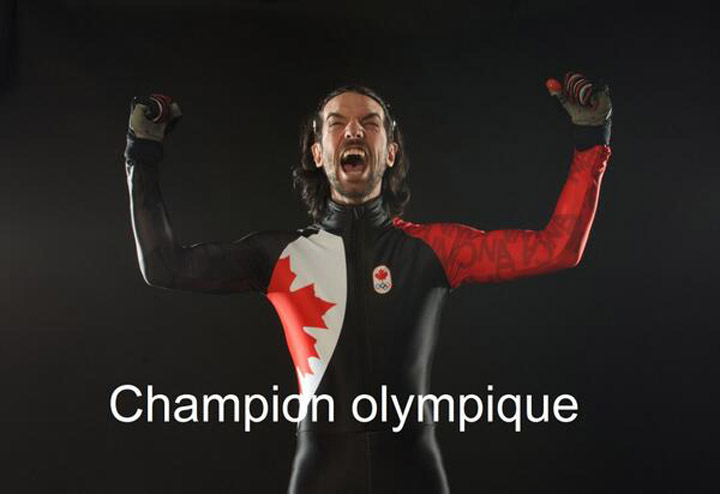TORONTO – His chest is puffed up, arms outstretched from the body with his hands in fists and sometimes his mouth is open in a wide grin. Does this look familiar to you?

According to scientists who study facial expressions and emotions, this is the victory stance. We saw it on Canadian speed skater Charles Hamelin moments after he realized he took home the gold, and it was the same with Alexandre Bilodeau, as he ran to the stands to hug his brother and family.
It’s a universal gesture, regardless of culture and customs. Instead, it’s spontaneous–an innate response to winning, feeling proud and dominant.
“It’s signifying this person is victorious. It’s establishing one’s status in a hierarchy of some sort and telling others we’ve made this achievement when others have not,” Dr. David Matsumoto, a San Francisco State University researcher, told Global News.
“It’s not just something people put on and do – it’s human nature and a nature we inherited from other animals who do this also,” Dr. Jessica Tracy, of the University of British Columbia, said.
Matsumoto and Tracy both specialize in studying body language.
Tracy’s own research at UBC’s Emotion Lab has suggested that even judo athletes who are born blind show pride and shame through body language.
- ‘Alarming trend’ of more international students claiming asylum: minister
- TD Bank moves to seize home of Russian-Canadian jailed for smuggling tech to Kremlin
- Why B.C. election could serve as a ‘trial run’ for next federal campaign
- Justin Trudeau headed to UN Summit of the Future amid international instability
The 2008 study was the first of its kind – Tracy looked at athletes across 30 countries who participated in the 2004 Olympic and Paralympic Games. A photographer shot athletes during and immediately after each judo match, telling a story of their emotional response frame-by-frame in the 15 seconds after winning or losing a match.
Across the board, winners’ body language was coded the same way: arms raised high, head tilted up and chest puffed out. Defeat was also clear: chest hunched in, shoulders narrowed and head tilted down.

Get weekly health news
“The fact that we found that finding among the congenitally blind does suggest that it’s likely to be innate. It’s hard to imagine how these people would have learned to display this response spontaneously in these particular situations,” Tracy said.
“I don’t think it’s a conscious response.”
In studying animals, she sees the same response: monkeys, for example, will put on a “bluff display,” standing on two feet and upright.
“They look a lot like someone showing pride and they do it when they want to assert their dominance so it makes sense,” she said. Animals also have displays of submission – think of a dog crouching down, making himself look smaller.
Matsumoto says there’s more than pride going on, especially in something as high stakes as the Olympics. He says that pride requires more self-evaluation, to understand our own emotions about our success.
“There’s an element of aggressiveness,” he explained. Triumph is especially apparent in sports like judo where two people are going head-to-head. You’ve conquered someone or something and you’re showing it.
“One of the biggest differences between triumph and pride can be seen in the face,” Matsumoto said.
“When someone feels triumphant after a contest or challenge, their face can look quite aggressive. It’s like Michael Phelps’ reaction after winning the 2008 Olympics. It looks quite different to the small smile we see when someone is showing pride.”
Some of us are taught to be humble and not to flaunt, especially in some cultures. That’s all thrown out the window for the first few moments after a win, Matsumoto notes.
“After that, our social situations start to take over and we’re a good loser or a good winner.”
The Olympics are an optimal time for us to watch for body language, Matsumoto said. Remember the 2012 London Olympics and the U.S. gymnast with her notorious scowl after she won the silver?
Raw emotion is in all kinds of daily scenarios, Matsumoto says. Births, deaths, funerals, weddings, everyday social behaviour happens all the time. It’s just the Olympics is one of those optimal situations where the environment is controlled.
“I see it everyday, all the time,” Matsumoto says of reading body language.
carmen.chai@globalnews.ca
Follow @Carmen_Chai











Comments